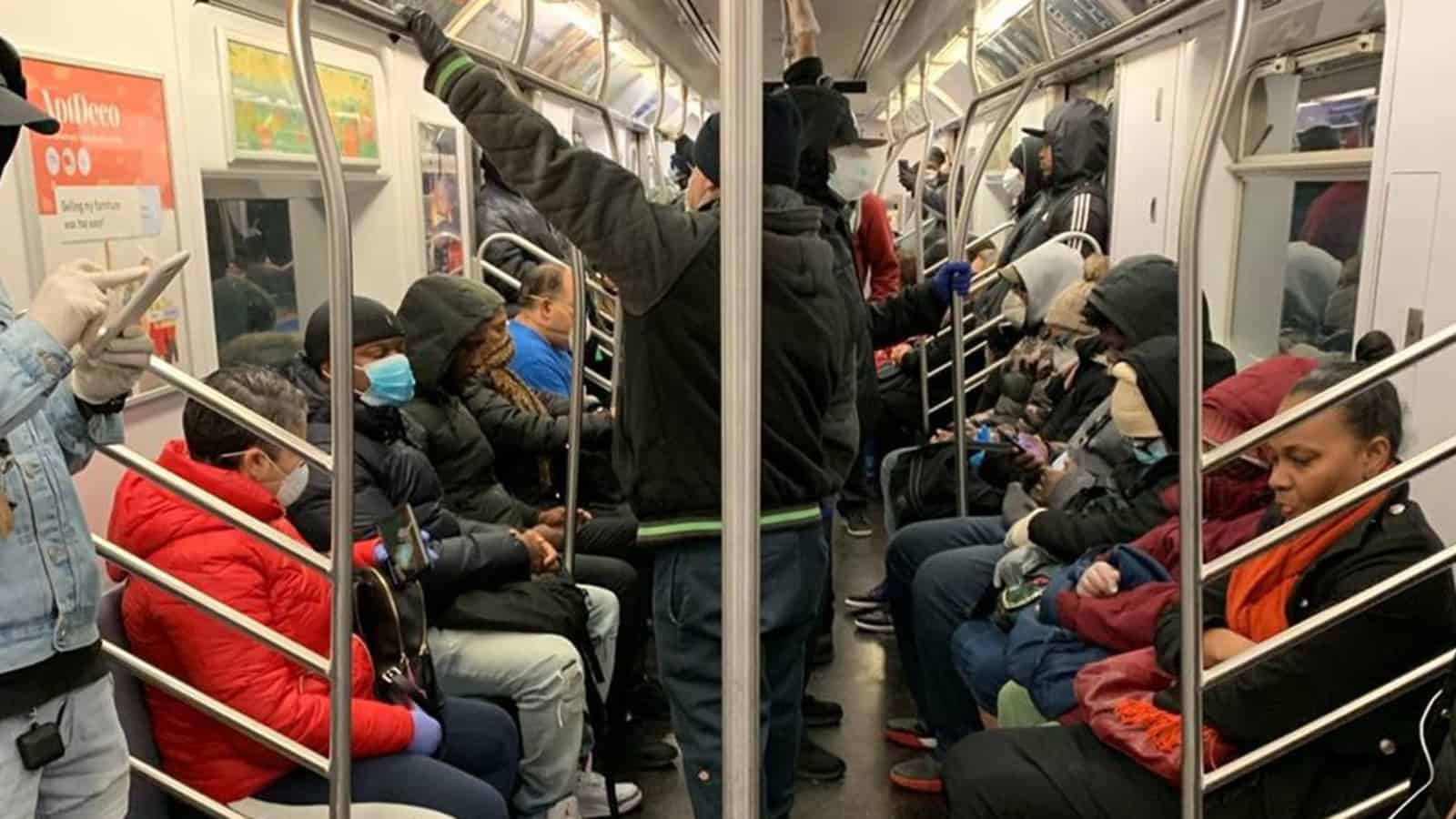Article, Business, FEATURED STORIES, news, TRENDING, U.S.
Study Suggests NYC Subways Were Major Factor in Coronavirus Spread

A working paper released last week by Dr. Jeffrey Harris from the National Bureau of Economic Research suggests that the New York City subway system was a major spreader of the coronavirus. The paper examines ridership rates compared to confirmed COVID-19 cases in New York City’s five boroughs. Using mostly corollary and circumstantial data, the paper concludes that there was a “clear temporal relation” between the drops of ridership in March and April and subsequent decline in the COVID-19 doubling rate.
The paper is not able to demonstrate a causative relationship between subway ridership and the spread of the virus, but presents hard to ignore context.
MTA Takes Early Measures to Slow the Spread
The Metropolitan Transit Authority (MTA) took various measures to slow the spread of the virus and protect MTA employees, but the paper suggests these measures were insufficient. In early March, the MTA and New York City Mayor Bill de Blasio were still only ordering people to stay home or off the transit system if they displayed symptoms of illness. “If you’re sick, you shouldn’t be going on the subway,” de Blasio stated on March 9. However, the virus can be spread by asymptomatic carriers.
The MTA doubled their cleaning efforts for high-touch surface areas like turnstiles, ticket machines, and handrails to twice per day. The entire active service fleet is cleaned using CDC-endorsed products once every 72 hours.
The transit service is also suspending fare collection on local buses, and allowing entrance through the back door to protect transit workers, among other measures.
Subway Ridership Linked to COVID-19 Cases
Still, in early March there was not a significant enough decline in ridership to slow the spread of the virus, according to Harris. MTA ridership declined most sharply a week later on March 16, when de Blasio issued a stay home order. By the last week in March, subway ridership had dropped 86 percent compared to the first week in March. According to Harris, this drop is directly correlated to the plateau in new COVID-19 cases reported in the city.
The paper also suggests that some decisions made by the MTA to help offset the drop in ridership and decreased staff capacity actually made the problem worse.
For example, in late March the MTA suspended a number of lines, cut express routes, and issued a 25 percent cut to services across the board. The agency made these changes for budgetary reasons and due to worker shortages. But, according to Harris, the MTA should have been doing the opposite.
“From the public health perspective, the optimal policy would have been to double – maybe even triple –the frequency of train service. The agency’s decision to convert multiple express lines into local service only enhanced the risk of contagion.”
MTA Workers Face Higher Infection Rates
Even with decreased ridership, some essential workers are still finding it hard to maintain a safe distance on the subway. In early April, travelers still packed the trains and stations. The city’s homeless population, 2,000 of whom normally sleep in the subways, are also being cramped onto fewer cars as service decreases. The change has led to a noticeable increase of unhoused individuals in subway cars–making social distancing even harder for an already vulnerable population.
The impact of the spread of the virus has been felt across the city, and transit workers have been among the hardest hit. By April 16, the MTA reported 68 deaths among about 2,400 employees who had tested positive. Thousands more are stuck at home on quarantine or have called out sick. With 40,000 front-line transit workers, Harris calculated that the MTA employees are experiencing an infection rate more than three times that of the most impacted NYC communities, like East Elmhurst.
“It is hard to imagine any plausible explanation for these workers’ losses except that their place of work was the principal source of their coronavirus infections,” the paper states.
Suggested Remedies Won’t be Cheap
Harris suggests multiple remedies that could be implemented in the coming weeks as pressure to relax social distancing measures ramps up. He suggests “limits on the numbers of passengers per transport unit, refurbished vehicles with enhanced ventilation, subsidies for drivers to transport workers in SUVs, vans and minibuses, new technologies to determine which stations an infected person entered and exited, and redirection of passenger traffic to less dense lines.”
It’s unclear how much these remedies would cost, though, and the MTA is already hemorrhaging money due to the drop in ridership. The agency is already seeking a $4 billion federal bailout.
“No agency of our size can find additional billions in savings equivalent to the damages we have and will sustain as a result of this pandemic,” said Patrick J. Foye, chairman of the transit authority.


